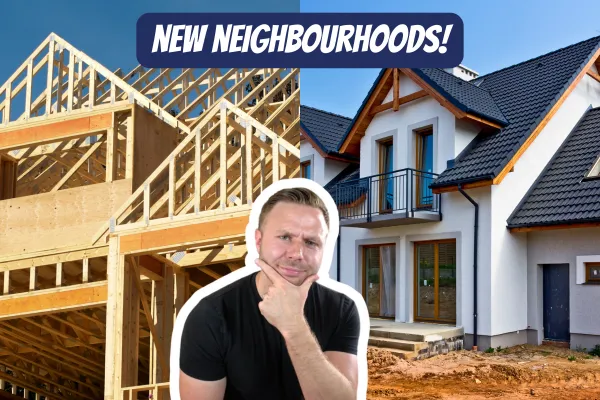
Behind the Scenes: How a Builder Plans a New Neighborhood in Lancaster, PA
If you’ve ever driven past a new development in Lancaster County and wondered “How did this all come together?”, you’re not alone. From the first survey stakes in the ground to the grand opening of model homes, creating a new neighborhood is a complex process involving market research, engineering, zoning approvals, and a lot of coordination.
Whether you’re a future homebuyer or a curious Lancaster local, here’s an inside look at how builders turn farmland or vacant lots into thriving communities.
1. Finding the Right Land
Before anything else, a builder must identify a parcel that fits the vision of the neighborhood they want to create.
In Lancaster County, that often means:
Proximity to major roads like Route 30 or 283 for easy commutes
Access to public utilities or viable well/septic options
Located in school districts that attract buyers, such as Hempfield, Manheim Township, or Conestoga Valley
Builders also weigh local housing demand and price points to ensure the project will be profitable.
2. Market Research & Demand Forecasting
Even before purchasing land, builders invest in research to determine what types of homes will sell best.
For example:
In suburban Lancaster, three- to four-bedroom single-family homes are often in high demand for families
Closer to Lancaster City, townhomes or duplexes might appeal to first-time buyers or downsizers
Amenities like walking trails or a small community park can make the neighborhood stand out
Builders use local real estate market data (including Lancaster PA housing market trends) to forecast sales timelines and set price ranges.
3. Zoning & Local Approvals
This is where the paperwork begins. Builders must work with the township or borough to ensure the land is zoned correctly for residential use.
Key steps include:
Submitting development plans to the local planning commission
Addressing traffic flow, stormwater management, and environmental impact studies
Holding public hearings to address neighbor concerns
In Lancaster County, zoning requirements can vary widely between municipalities, so approvals can take months—or even years.
4. Designing the Neighborhood Layout
Once approvals are underway, engineers and architects create a detailed plan.
This includes:
Road layouts and lot sizes
Placement of utilities, sidewalks, and green spaces
Stormwater ponds or underground drainage systems
Designing entrance features like signage, landscaping, and lighting
Builders also work to ensure that the layout maximizes curb appeal for each home site.
5. Choosing Home Styles & Features
A successful neighborhood offers homes that meet buyer preferences and match the builder’s brand.
In Lancaster County, that might mean:
Craftsman-style single-family homes with front porches
Energy-efficient construction to appeal to eco-conscious buyers
Flexible floorplans with open kitchens, home offices, and finished basements
Exterior color palettes that blend with Lancaster’s scenic surroundings
6. Building Infrastructure
Before the first home goes up, crews install the backbone of the neighborhood:
Roads and sidewalks
Water, sewer, and electric lines
Street lighting and signage
Only once these are in place can vertical construction begin.
7. Marketing & Model Homes
To kick off sales, builders often construct one or two model homes to showcase finishes, layouts, and upgrades.
Buyers in Lancaster PA can tour these models to get a feel for the space before purchasing a lot and floor plan. Builders then launch targeted marketing campaigns, often partnering with local real estate agents.
8. Building in Phases
Large neighborhoods are typically built in phases to match demand and cash flow.
This allows the builder to:
Adjust pricing based on market response
Incorporate buyer feedback into later phases
Reduce the risk of unsold inventory
9. The Final Touches
When the final homes are complete, the builder focuses on finishing community amenities—like playgrounds, landscaping, and walking paths—before officially handing the neighborhood over to the homeowners association (HOA).
Why This Matters for Lancaster Homebuyers
Understanding the process helps you:
Time your purchase to take advantage of early-phase pricing
Choose the best lot before they’re gone
Spot hidden costs like higher property taxes on new construction or additional closing costs from transfer tax
And remember—the builder’s agent represents the builder, not you. Bringing your own real estate agent from day one ensures your best interests are protected.
Ready to Explore New Construction in Lancaster?
If you’re thinking about buying a new build in Lancaster County, I can guide you through the process, negotiate upgrades, and help you avoid costly mistakes.
